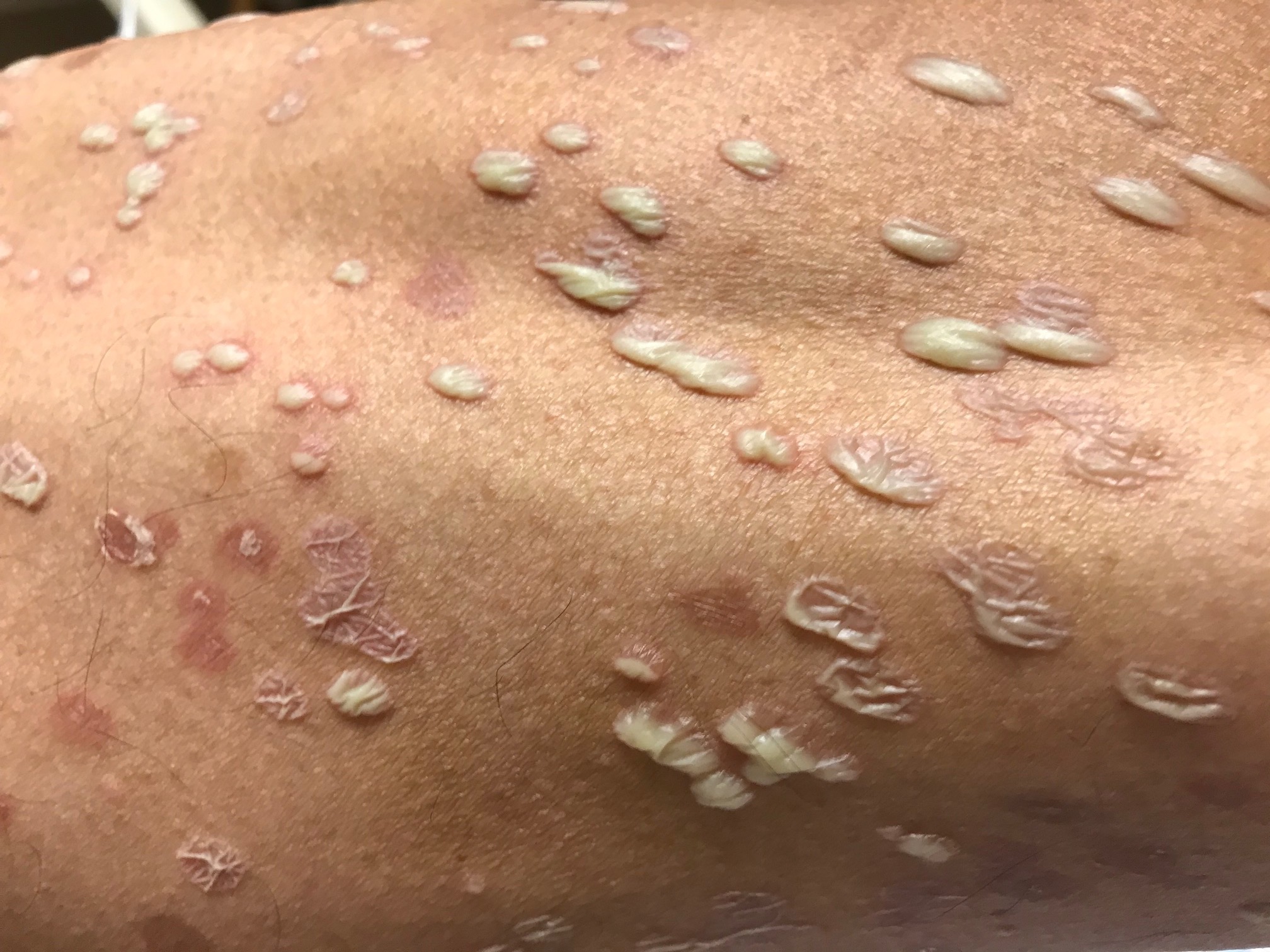April 2020 Case Study
A 54-year-old female with no known medial history presents with recurring crops of pustules on her abdomen and legs (Figure 1). She notes that they will resolve after a few days and does not cause any scarring. Which of the following is most typically associated with this disease?
A.) IgA gammopathy
B.) IgM gammopathy
C.) IgGκ gammopathy
D.) IgGλ gammopathy
E.) IgE gammopathy
Correct Answer: A.) IgA gammopathy
This patient has Sneddon-Wilkinson, or sub-corneal pustular dermatosis (SPD). SPD is a benign disease that causes recurrent crops of sterile, flaccid pustules that are usually asymptomatic but can sometimes be pruritic. They occur most commonly on the flexural surfaces and trunk. The pustules will usually last a few days to weeks before resolving with no scarring. The pathogenesis of SPD is unknown, however there have been associations of SPD with IgA paraproteinemia, neutrophilic diseases such as Sweets and pyoderma gangrenosum, as well as irritable bowel disease and lupus. Most patients can reach complete remission with dapsone but some require other treatments including phototherapy, oral steroids, topical steroids, acitretin, and cyclosporine.
References
- Watts PJ, Khachemoune A. Subcorneal Pustular Dermatosis: A Review of 30 Years of Progress. Am J Clin Dermatol. 2016;17(6):653-71.


